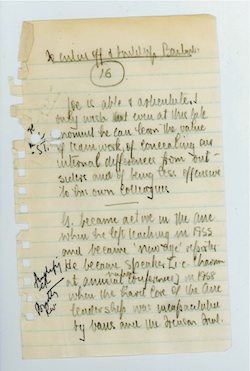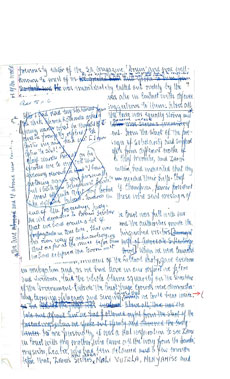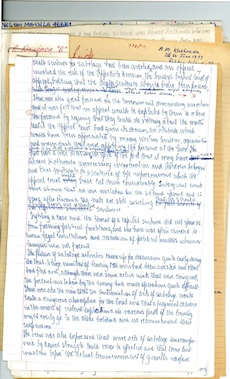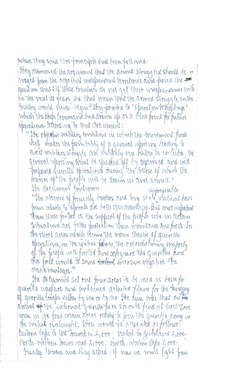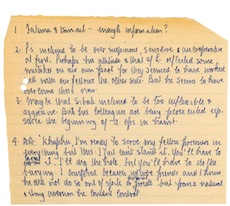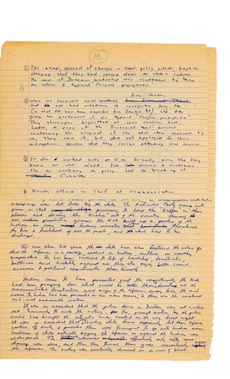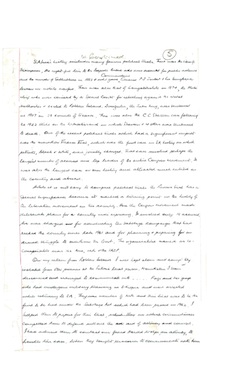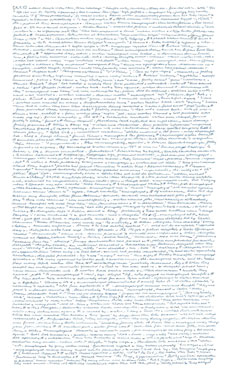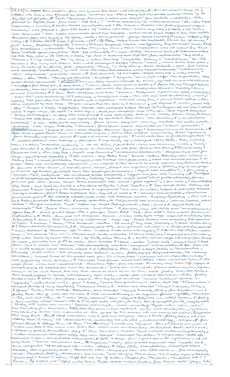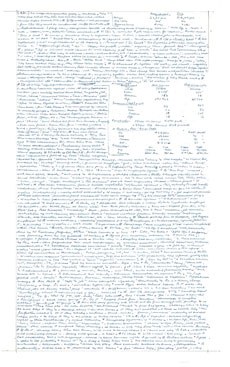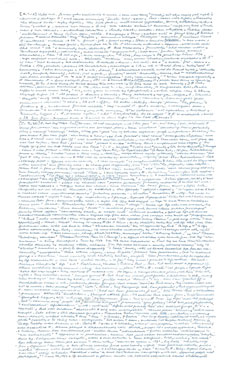4 November, 2011 – The recent revival of interest in the making of Nelson Mandela’s autobiography Long Walk to Freedom has resulted in fresh discoveries from the archive of the Nelson Mandela Centre of Memory – including the typed version of the original manuscript.
Some time after his release from prison in 1976 – when Mac Maharaj smuggled the manuscript from Robben Island in the bound cover of a study file – the handwritten manuscript was typed up by him and Sue Rabkin. It was intended that the manuscript be published to mark Mr Mandela’s 60 birthday in 1978 and to help to draw attention to the freedom struggle. The ANC leadership decided not to publish it.
A year after Mr Mandela’s release from prison in 1990 he began working with American journalist Richard Stengel on what is now Long Walk to Freedom. It was based on the prison manuscript and a series of interviews. Mr Mandela said during one of their conversations that while on Robben Island in the mid-Seventies he would write for hours at night and then give the manuscript to fellow prisoners Ahmed Kathrada and Walter Sisulu to comment on and to correct.
In Long Walk to Freedom, published in 1994, Mr Mandela said:
“We created an assembly line to process the manuscript. Each day I passed what I wrote to Kathy, who reviewed it and then read it to Walter. Kathy then wrote their comments in the margins. Walter and Kathy have never hesitated to criticize me, and I took their suggestions to heart, often incorporating their changes. This marked-up manuscript was then given to Laloo Chiba, who spent the next night transferring my writing to his own almost microscopic shorthand, reducing ten pages of foolscap to a single small piece of paper. It would be Mac’s job to smuggle the manuscript to the outside world.”
After Mr Mandela had made the corrections, the pages were given to fellow prisoners Isu ‘Laloo’ Chiba and Mac Maharaj to transcribe into tiny handwriting. In his upcoming biography A tall ship and a star: Reflections on the life of Laloo Isu Chiba, he describes how he and Mr Maharaj transcribed the 600 pages of manuscript into about 60 pages. The majority of the work was done by Mac.
That manuscript was then divided into cocoa containers and buried in the garden of B Section, Robben Island, using digging tools fashioned by Jeff Masemola. Their later discovery by prison officials during the construction of a wall, resulted in Mr Mandela, Mr Sisulu and Mr Kathrada – whose handwriting was on the original – in losing their study privileges for four years.
Only a handful of pages of the original manuscript remain and are housed at the South African National Archives in Pretoria.
The release of this unique archival record is part of a broader systematic process to place Nelson Mandela-related archival materials in the public domain.
Click here to download the typed manuscript.
